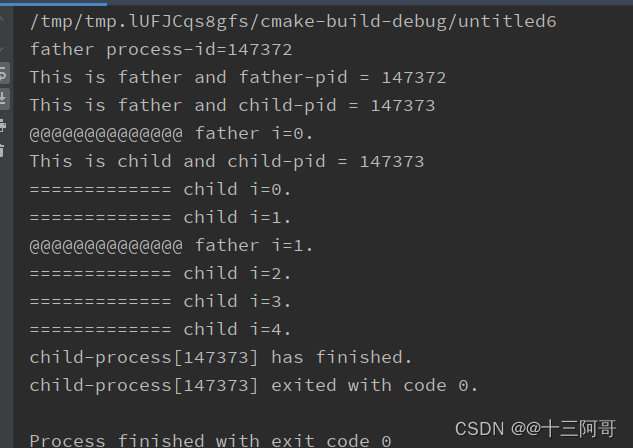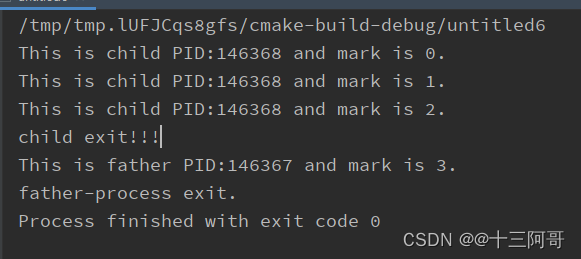本文主要是介绍linux多进程-fork和vfork,希望对大家解决编程问题提供一定的参考价值,需要的开发者们随着小编来一起学习吧!
参考文章:
Linux——进程(fork与vfork)
多进程编程学习笔记-1-进程基础
演示demo1
fork()和wait()
#include <stdio.h>
#include <sys/types.h>
#include <sys/wait.h>
#include <unistd.h>
#include <errno.h>
#include <string.h>
#include <stdlib.h>int main()
{printf("father process-id=%d\n", getpid());pid_t pid_fork = fork(); // if success, the pid_fork is child-process-idif(pid_fork > 0) {printf("This is father and father-pid = %d\n", getpid());printf("This is father and child-pid = %d\n", pid_fork);//for(int i = 0; i < 2; i++) {printf("@@@@@@@@@@@@@@ father i=%d.\n", i);sleep(1);}// wait child-process finishedint stat_val ;pid_t child_pid;child_pid = wait(&stat_val);printf("child-process[%d] has finished.\n", child_pid);if(WIFEXITED(stat_val)) {printf("child-process[%d] exited with code %d.\n", child_pid, WEXITSTATUS(stat_val));} else {printf("child-process[%d] terminated abnormally.\n", child_pid);}} else if(pid_fork == 0) {printf("This is child and child-pid = %d\n", getpid());for(int i = 0; i < 5; i++) {printf("============= child i=%d.\n", i);sleep(1);}} else {printf("fork error and error is %d[%s].", errno, strerror(errno));perror("fork error.");exit(1);}return 0;
}

演示demo2
fork()和vfork()的区别:
1)fork(): 父子进程的执行次序不确定。
vfork():保证子进程先运行,在它调用 exec(进程替换) 或 exit(退出进程)之后父进程才可能被调度运行。
2)fork(): 子进程拷贝父进程的地址空间,子进程是父进程的一个复制品。
vfork():子进程共享父进程的地址空间(准确来说,在调用 exec(进程替换) 或 exit(退出进程) 之前与父进程数据是共享的。
#include <stdio.h>
#include <sys/types.h>
#include <unistd.h>
#include <stdlib.h>// vfork()int main()
{int mark = 0;pid_t pid = vfork();while(1) {if(pid > 0) {printf("This is father PID:%d and mark is %d.\n", getpid(), mark);sleep(2);printf("father-process exit.");break;} else if(pid == 0) {printf("This is child PID:%d and mark is %d.\n", getpid(), mark++);sleep(2);if(mark > 2) {printf("child exit!!!\n");exit(-1);}}}return 0;
}

这篇关于linux多进程-fork和vfork的文章就介绍到这儿,希望我们推荐的文章对编程师们有所帮助!








